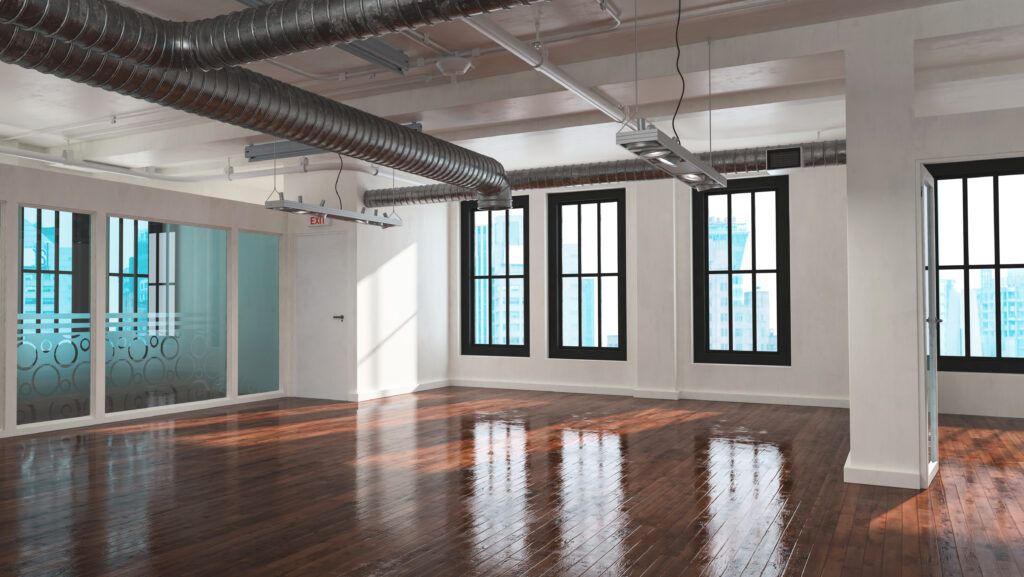
As the dynamics of work and living spaces evolve in the wake of the COVID-19 pandemic, numerous U.S. cities are exploring innovative solutions to repurpose vacant office spaces. This shift in urban planning and development aims to address critical issues such as housing shortages, environmental sustainability and the glut of unoccupied commercial buildings. The growing trend of converting underutilized office space into residential properties could have a particular impact on the availability of affordable housing units. There are, however, obstacles to successfully revitalizing sleepy downtowns now that fewer workers need office space, including the scale of such a transformation and the challenges it poses. Cities are looking at a variety of strategies to overcome these hurdles, and design-build could play a role in making these conversions successful.
The Rising Trend in Office Space Conversion
A recent working paper by Arpit Gupta, Candy Martinez and Stijn Van Nieuwerburgh for the National Bureau of Economic Research (NBER) highlights the potential of repurposing abandoned or underused commercial spaces to tackle housing shortages in the United States. This issue is exacerbated by a housing deficit of approximately 2 million units, as reported by a Morgan Stanley study cited in Fortune.
Cities of various sizes across the United States are actively considering or implementing these conversions. According to data released by CBRE, the number of office-to-residential conversion projects in major U.S. cities in 2023 has more than doubled compared to the previous seven years. In 2016-2022, the yearly average was 41 projects, while 2023 alone has seen nearly 100 projects.
Types of Conversions
Multifamily residential conversions are the most common transformation, accounting for just under half of all projects. Conversions to mixed-use facilities and life sciences laboratories have also seen an increase in popularity.
Challenges in Office-to-Residential Conversions
While the need to repurpose these spaces is evident, converting buildings designed for productivity into residential environments presents significant challenges. On average, most major cities have around 20% of office space vacant, but only about 2% of these spaces are currently undergoing conversion. For instance, in San Francisco, where over a quarter of office space sits empty, only slightly more than 2% is in the conversion process. In Cleveland, while the conversion ratio is higher at 10.8%, the overall availability of office space is relatively low at 15.5%.
Factors Driving Office Vacancies
Several factors contribute to the increasing amount of vacant office space. Hybrid and remote work arrangements, which have become permanent in many parts of the country, are expected to continue growing. This shift, along with other factors, could lead to over 300 million square feet of office space becoming vacant within the next six years. Cushman & Wakefield predicts that up to 1 billion square feet of office space could become available in the United States by 2030.
Design and Structural Challenges
Converting office spaces into residential units involves overcoming design and structural challenges. Many office buildings are ill-suited for residential purposes due to issues like plumbing and electrical infrastructure, ceiling height regulations and window distribution. Additionally, factors external to the buildings, such as inadequate parking and densely packed commercial districts, often complicate conversion efforts.
The Issue of Price and Quality
Not all conversions are successful or accessible to those most affected by the housing shortage. Some converted apartments may lack essential amenities or suffer from poor design, exacerbating housing discrimination and rising home prices. For instance, a viral TikTok video showcased a poorly executed conversion in San Rafael, California, where the living space remained uninviting and impractical, highlighting the importance of quality in these transformations.
Luxury Conversions
Some conversions, like Manhattan’s 15 Broad Street, have successfully transformed corporate spaces into luxury residential units. However, the luxury tag often places these properties out of reach for those struggling with housing affordability issues, with prices ranging from $895,000 to more than $2 million to purchase or thousands of dollars per month to rent –– some units rent in the tens of thousands per month.
Overcoming Challenges
Overcoming the structural, legal and logistical challenges of office-to-residential conversions requires substantial financial investments. In New York, Mayor Eric Adams is considering changes to permit rules and zoning laws to facilitate these conversions, believing they could provide 20,000 homes in the city over the next decade. Architects, such as Steven Paynter of Gensler, emphasize the importance of assessing building suitability before undertaking conversions, as retrofitting or demolishing parts of the building can significantly impact affordability.
Zoning Restrictions and Mixed-Use Challenges
In some cases, antiquated zoning restrictions can hinder conversion efforts, necessitating changes to existing rules. This is particularly challenging in mixed-use, 24-hour neighborhoods that require not only residential space but also spaces for leisure and entertainment.
The conversion of unused office spaces to affordable housing represents a promising solution to address housing shortages and repurpose underutilized urban real estate. While this trend is gaining momentum, it is not without its challenges, including structural, legal and affordability concerns. To fully realize the potential of these conversions, cities must adapt regulations, consider how design-build might help and prioritize accessibility and quality in converted spaces. As the United States navigates evolving work and living patterns, the successful conversion of office spaces into homes can play a pivotal role in creating more inclusive and sustainable urban environments.

